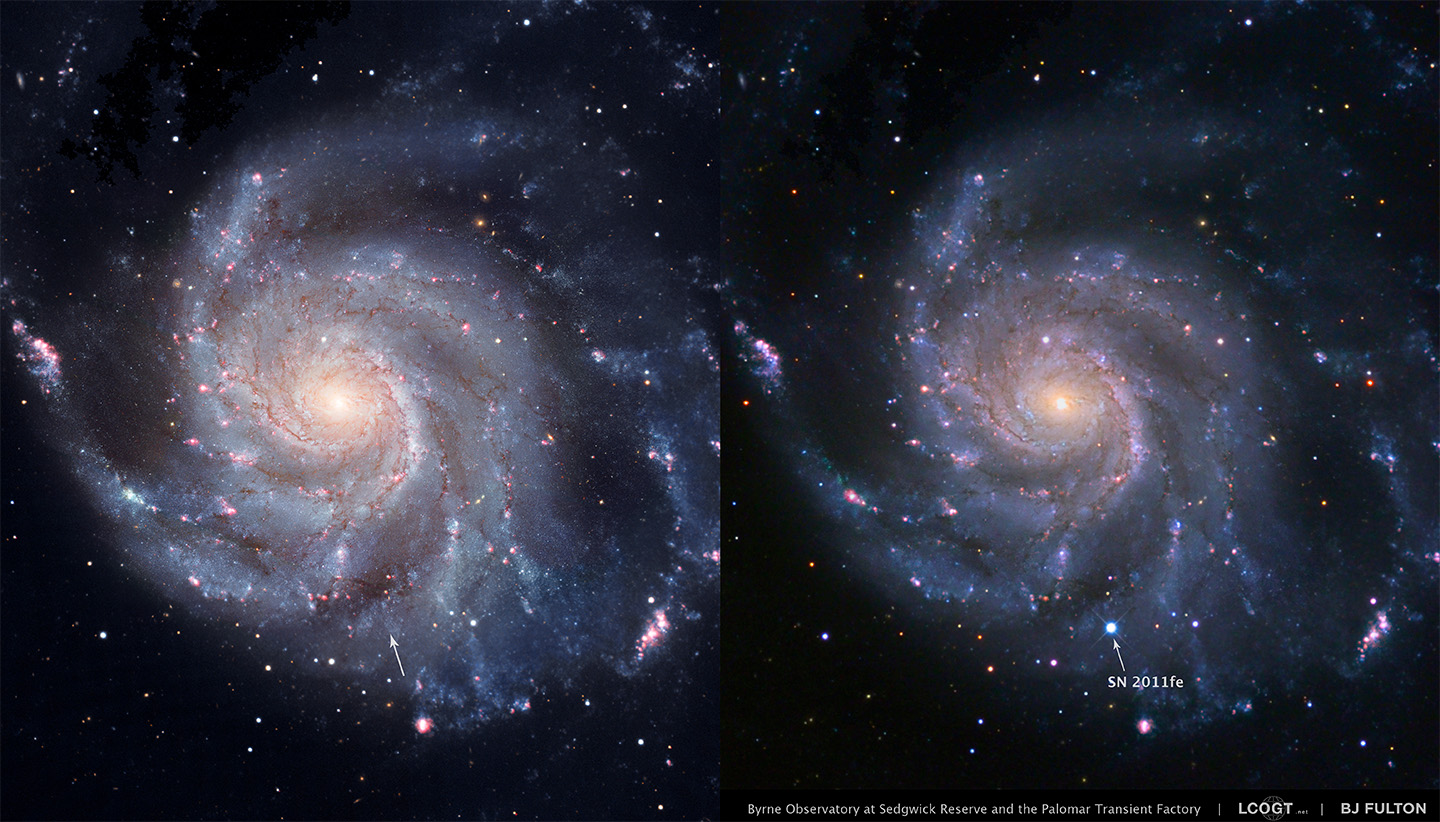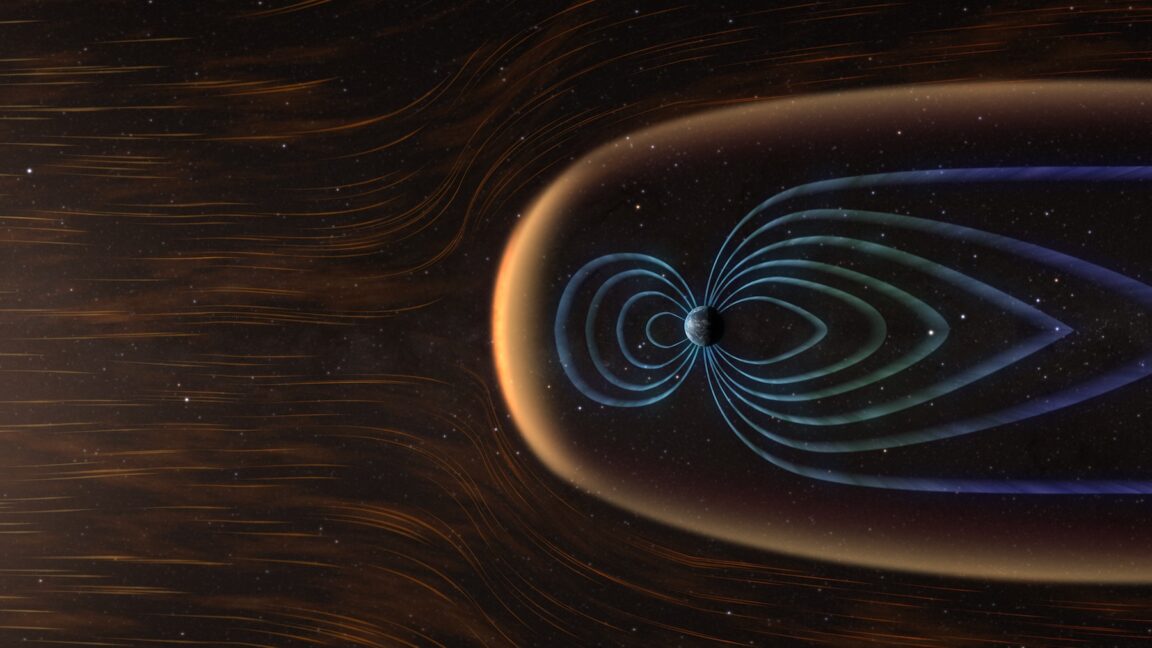By Ewan D. Barr, Arunima Dutta, and Benjamin Stappers February 3, 2024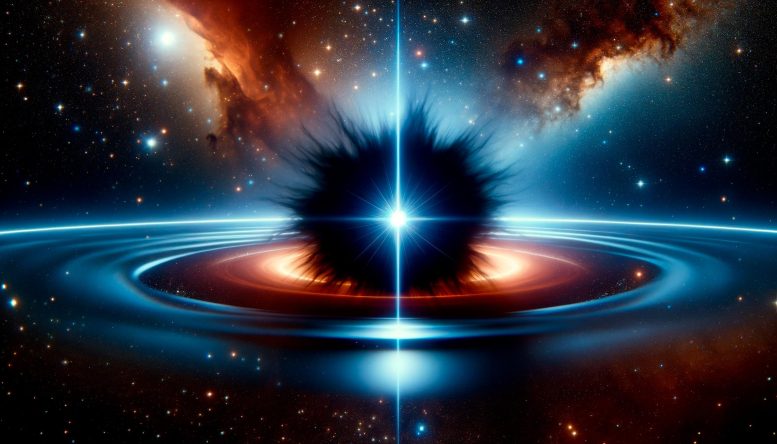 Researchers have found a mysterious cosmic system that might include an object bridging the gap between neutron stars and black holes, challenging current astrophysical classifications and deepening our insight into cosmic extremes. Credit: SciTechDaily.comAstronomers have identified a celestial object that defies classification, potentially revealing a new type of cosmic entity at the edge of known physics. In their latest study, published in Science, they report the discovery, likely to spark discussion and speculation.
Researchers have found a mysterious cosmic system that might include an object bridging the gap between neutron stars and black holes, challenging current astrophysical classifications and deepening our insight into cosmic extremes. Credit: SciTechDaily.comAstronomers have identified a celestial object that defies classification, potentially revealing a new type of cosmic entity at the edge of known physics. In their latest study, published in Science, they report the discovery, likely to spark discussion and speculation.
Neutron stars are among the densest objects in the universe. As compact as an atomic nucleus and as large as a city, they push the limits of our understanding of extreme matter. The heavier a neutron star is, the more likely it is to eventually collapse to become something even denser: a black hole.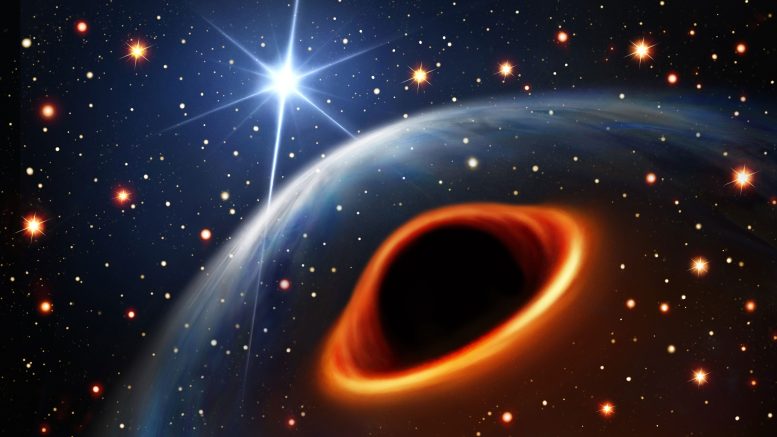 An artist’s impression of the system assuming that the massive companion star is a black hole. The brightest background star is its orbital companion, the radio pulsar PSR J0514-4002E. The two stars are separated by 8 million km and circle each other every 7 days. Credit: Daniëlle Futselaar (artsource.nl)The Edge of Understanding: Neutron Stars and Black HolesThese astrophysical objects are so dense, and their gravitational pulls so strong, that their cores – whatever they may be – are permanently shrouded from the universe by event horizons: surfaces of perfect darkness from which light cannot escape.
An artist’s impression of the system assuming that the massive companion star is a black hole. The brightest background star is its orbital companion, the radio pulsar PSR J0514-4002E. The two stars are separated by 8 million km and circle each other every 7 days. Credit: Daniëlle Futselaar (artsource.nl)The Edge of Understanding: Neutron Stars and Black HolesThese astrophysical objects are so dense, and their gravitational pulls so strong, that their cores – whatever they may be – are permanently shrouded from the universe by event horizons: surfaces of perfect darkness from which light cannot escape.
If we are to ever understand the physics at the tipping point between neutron stars and black holes, we must find objects at this boundary. We must find objects for which we can make precise measurements over long periods of time. And that’s precisely what we’ve found – an object that is neither obviously a neutron star nor a black hole.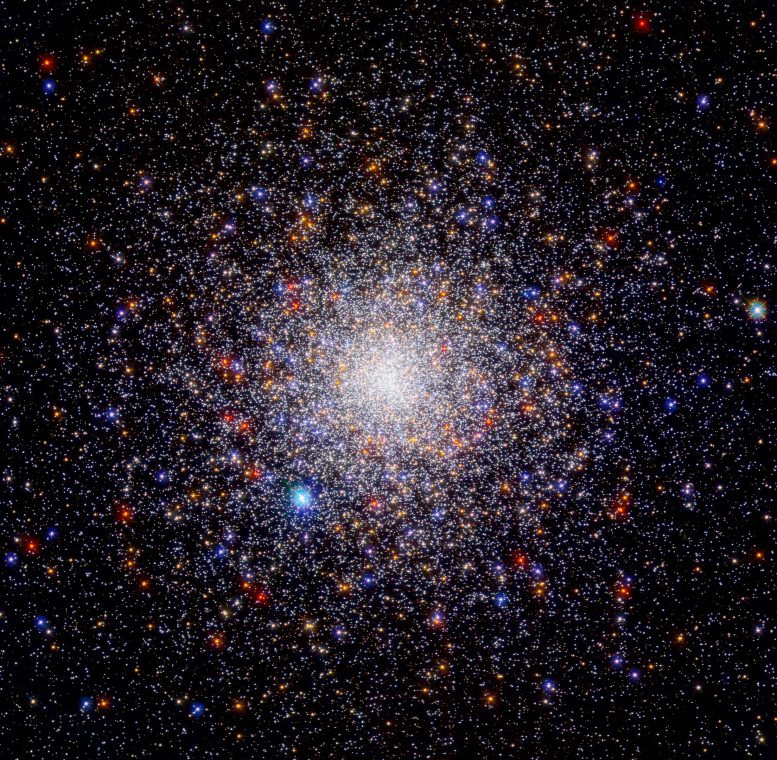 Hubble Space Telescope image of the globular cluster NGC 1851. Credit: NASA, ESA, and G. Piotto (Università degli Studi di Padova); Processing: Gladys Kober (NASA/Catholic University of America)A Cosmic Dance in NGC 1851The discovery was made when astronomers observed the star cluster NGC 1851, where they found what appears to be a pair of stars offering a new view into the extremes of matter in the universe. The system consists of a millisecond pulsar, a rapidly spinning neutron star that emits beams of radio light as it spins, and a massive, hidden object of unknown nature.
Hubble Space Telescope image of the globular cluster NGC 1851. Credit: NASA, ESA, and G. Piotto (Università degli Studi di Padova); Processing: Gladys Kober (NASA/Catholic University of America)A Cosmic Dance in NGC 1851The discovery was made when astronomers observed the star cluster NGC 1851, where they found what appears to be a pair of stars offering a new view into the extremes of matter in the universe. The system consists of a millisecond pulsar, a rapidly spinning neutron star that emits beams of radio light as it spins, and a massive, hidden object of unknown nature.
The massive object is dark, meaning it is invisible at all frequencies of light – from the radio to the optical, x-ray, and gamma-ray bands. Under normal circumstances, this would make it impossible to study. However, the millisecond pulsar offers a way to study it. Millisecond pulsars are similar to cosmic atomic clocks. Their spins are incredibly stable and can be precisely measured by detecting the regular radio pulse they emit. Although intrinsically stable, the observed spin changes when the pulsar is in motion or when its signal is affected by a strong gravitational field. By observing these changes, the properties of bodies in orbits with pulsars can be measured.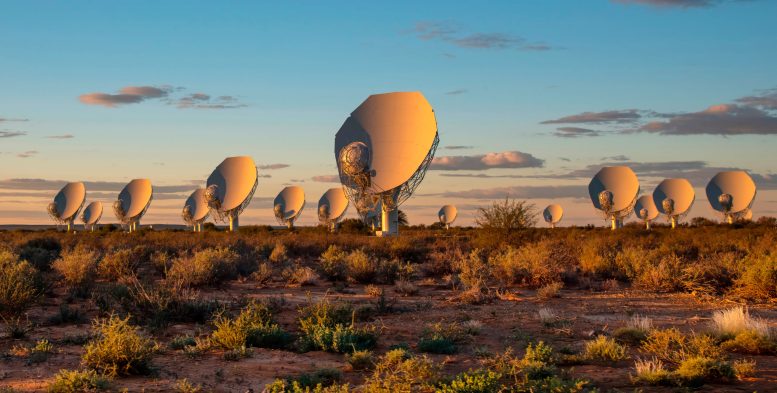 The team utilized the sensitive MeerKAT radio telescope, located in the Karoo semi-desert in South Africa. Credit: SARAOUnveiling the Mystery With MeerKATAn international team of astronomers used the MeerKAT radio telescope in South Africa to conduct observations of the system, referred to as NGC 1851E. These observations allowed for precise detailing of the orbits of the two objects, demonstrating that their point of closest approach changes with time. Such changes are described by Einstein’s theory of relativity, and the speed of a change provides information regarding the combined mass of the bodies in the system.
The team utilized the sensitive MeerKAT radio telescope, located in the Karoo semi-desert in South Africa. Credit: SARAOUnveiling the Mystery With MeerKATAn international team of astronomers used the MeerKAT radio telescope in South Africa to conduct observations of the system, referred to as NGC 1851E. These observations allowed for precise detailing of the orbits of the two objects, demonstrating that their point of closest approach changes with time. Such changes are described by Einstein’s theory of relativity, and the speed of a change provides information regarding the combined mass of the bodies in the system.
The observations revealed that the NGC 1851E system weighs almost four times as much as our Sun, and that the dark companion was, like the pulsar, a compact object – much denser than a normal star. The most massive neutron stars weigh in at around two solar masses, so if this were a double neutron star system, it would have to contain two of the heaviest neutron stars ever found.
To reveal the nature of the companion, understanding how the mass in the system was distributed between the stars is necessary. Again using Einstein’s general relativity, the system could be modeled in detail to find the mass of the companion to lie between 2.09 and 2.71 times the mass of the Sun. The companion’s mass falls within the “black hole mass gap” that lies between the heaviest possible neutron stars and the lightest black holes that can be formed from stellar collapse – an outstanding question in astrophysics.Possible CandidatesIt will be important to identify the true nature of the companion and reveal whether it is the lightest black hole or the most massive neutron star – or perhaps neither. At the boundary between neutron stars and black holes, there is always the possibility that some new, as yet unknown, astrophysical object might exist. Much speculation will follow this discovery, but it is already clear that this system holds immense promise for understanding matter in the most extreme environments in the universe.Written by:Ewan D. Barr – Project scientist for the Transients and Pulsars with MeerKAT (TRAPUM) collaboration, Max Planck Institute for Radio AstronomyArunima Dutta – PhD Candidate at the Research Department Fundamental Physics in Radio Astronomy, Max Planck Institute for Radio AstronomyBenjamin Stappers – Professor of Astrophysics, University of ManchesterAdapted from an article originally published in The Conversation.![]()








